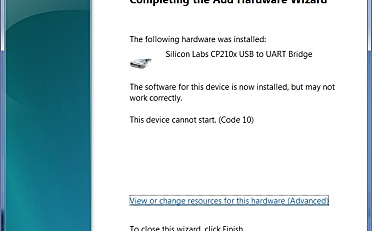在本教程中,您将学习如何使用 SMTP 服务器通过 ESP8266 NodeMCU 板发送电子邮件。我们将展示如何发送包含原始文本、HTML 文本的电子邮件,以及如何发送图像和文件 (.txt) 等附件。我们将使用 Arduino 内核对 ESP8266 NodeMCU 板进行编程。
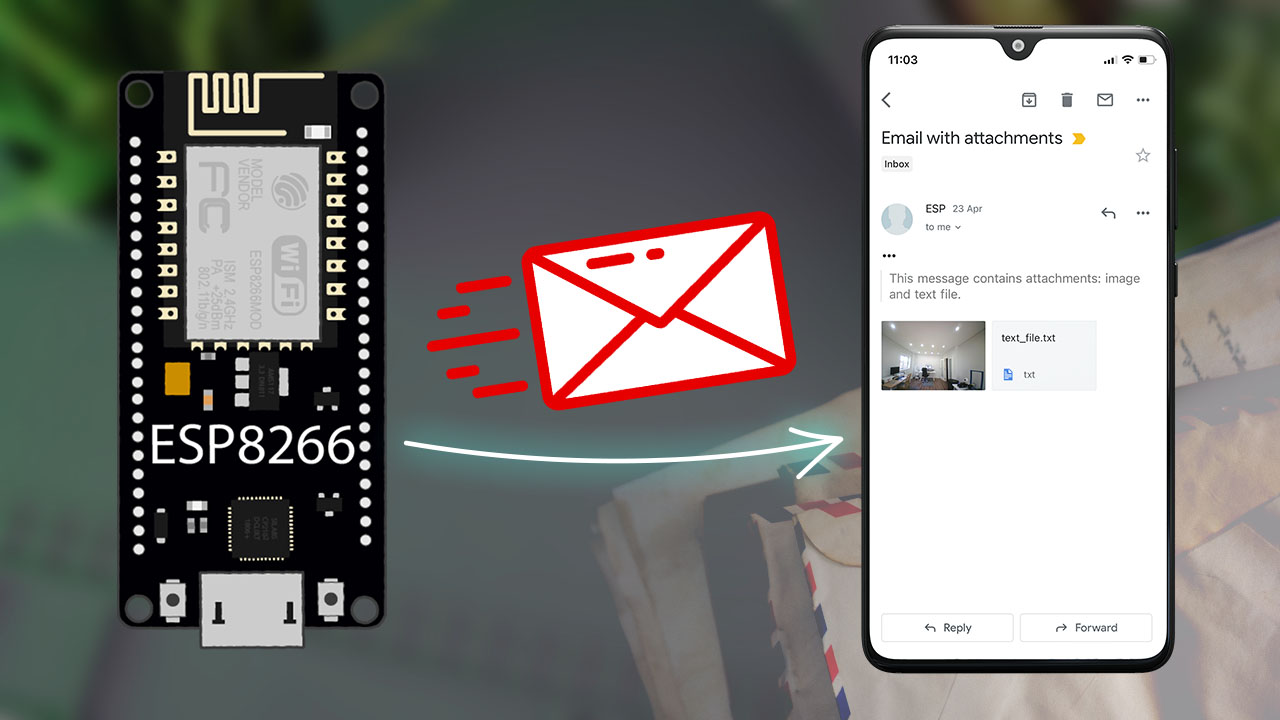
SMTP 服务器简介
SMTP 是指简单邮件传输协议,它是电子邮件传输的互联网标准。要使用ESP8266发送电子邮件,您需要将其连接到 SMTP 服务器。
ESP-Mail-Client 库
要使用 ESP8266 NodeMCU 开发板发送电子邮件,我们将使用 ESP-Mail-Client 库。该库允许ESP8266通过 SMTP 和 IMAP 服务器发送和接收带或不带附件的电子邮件。
在本教程中,我们将使用 SMTP 发送带附件和不带附件的电子邮件。例如,我们将发送图像 (.png) 和文本 (.txt) 文件。通过电子邮件发送的文件可以保存在 ESP8266 文件系统(SPIFFS 或 LittleFS)或 microSD 卡(本教程未介绍)中。
安装 ESP-Mail-Client 库
在继续本教程之前,您需要安装 ESP-Mail-Client 库:
发件人电子邮件(新帐户)
我们建议您创建一个新的电子邮件帐户,以将电子邮件发送到您的主要个人电子邮件地址。不要使用您的主要个人电子邮件通过ESP8266发送电子邮件。如果您的代码出现问题,或者您错误地发出了太多请求,您可能会被禁止或暂时禁用您的帐户。
我们将使用新创建的 Gmail.com 帐户发送电子邮件,但您可以使用任何其他电子邮件提供商。收件人电子邮件可以是您的个人电子邮件,没有任何问题。
创建发件人电子邮件帐户
创建一个新的电子邮件帐户,用于ESP8266发送电子邮件。可以选择使用QQ或163邮箱等国内的邮箱。
对于163邮箱,需要在163邮箱的设置中开启“POP3/SMTP服务”并获取授权码,而不是使用常规密码。对于QQ邮箱,也需要开启相应的服务并获取授权码。
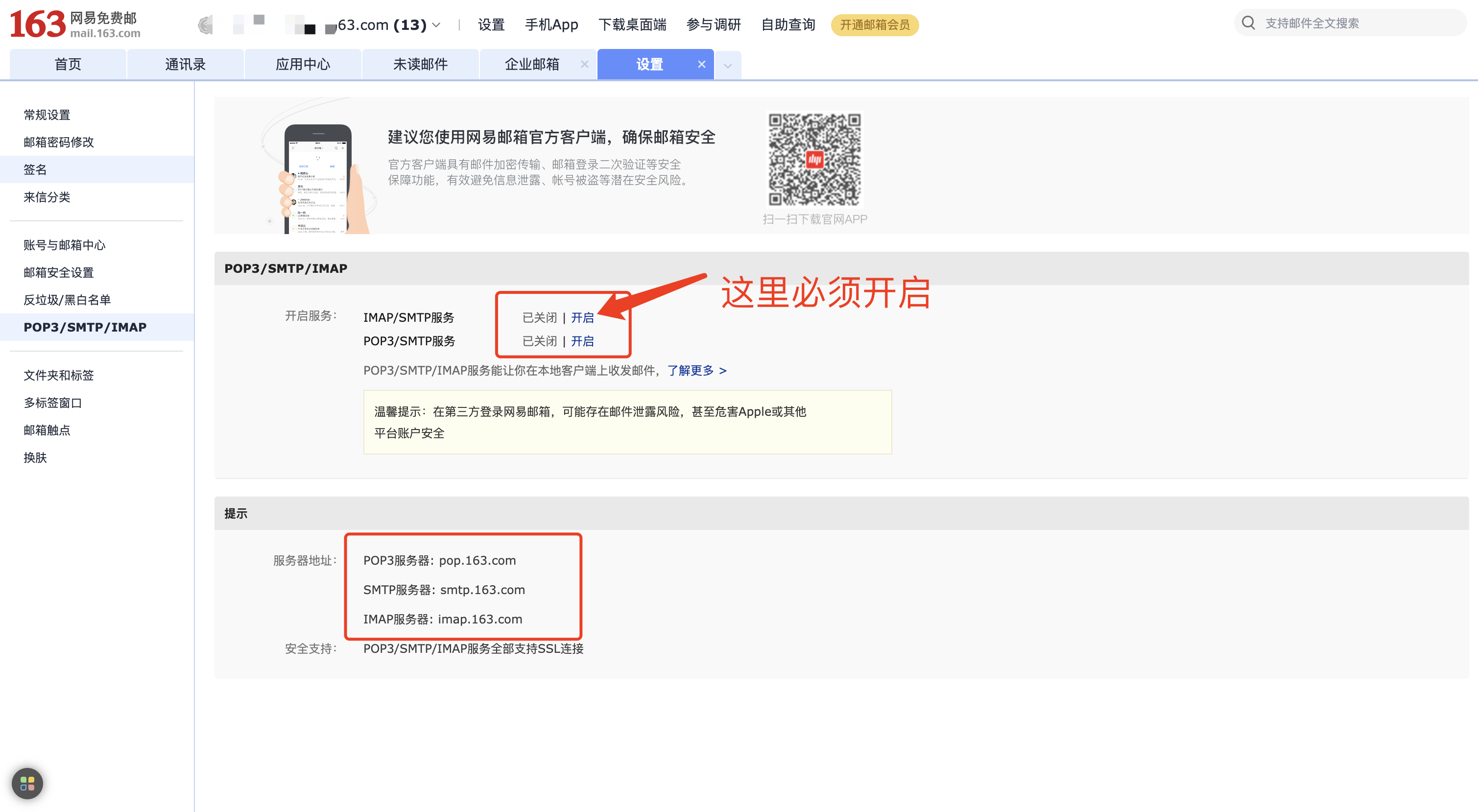
当使用国内常用的邮箱发送电子邮件时,您需要了解各个邮箱提供商的SMTP服务器设置。以下是一些其他国内常见邮箱的SMTP服务器设置:
- 网易(163)邮箱:
- SMTP服务器:smtp.163.com
- 端口:25
- 需要SMTP TLS/SSL:是
- 腾讯(QQ)邮箱:
- SMTP服务器:smtp.qq.com
- 端口:465
- 需要SMTP TLS/SSL:是
- 新浪邮箱:
- SMTP服务器:smtp.sina.com
- 端口:25
- 需要SMTP TLS/SSL:是
- 搜狐邮箱:
- SMTP服务器:smtp.sohu.com
- 端口:25
- 需要SMTP TLS/SSL:是
请在Arduino代码中使用相应的SMTP服务器设置和端口,并确保开启了相应邮箱的SMTP服务。对于每个邮箱,记得使用授权码或应用程序专用密码而不是常规密码,以提高安全性。
如果您使用的是其他电子邮件提供商,则需要搜索其 SMTP 服务器设置。现在,您已经准备好开始使用ESP8266发送电子邮件了。
在 Arduino IDE 中,您可以转到 ESP-Mail-Client > 文件>示例,并尝试使用提供的示例,您需要插入您的电子邮件详细信息(发件人和收件人帐户)、SMTP 服务器设置以及您的 SSID 和密码。
发送带有 HTML 的电子邮件或使用 ESP8266 发送原始文本
以下代码通过 SMTP 服务器发送带有 HTML 或原始文本的电子邮件。例如,ESP8266在启动时发送一次电子邮件。然后,您应该能够修改代码并将其集成到您自己的项目中。
先不要上传代码,您需要进行一些修改才能使其适合您。
您需要插入网络凭据并设置发件人电子邮件、SMTP 服务器详细信息、收件人和邮件。
代码的工作原理
此代码改编自库提供的示例。该示例注释得很好,以便您了解每行代码的作用。让我们看一下您需要或可能需要更改的相关部分。
首先,在以下行中插入您的网络凭据:
#define WIFI_SSID "REPLACE_WITH_YOUR_SSID"
#define WIFI_PASSWORD "REPLACE_WITH_YOUR_PASSWORD"插入 SMTP 服务器设置。如果您使用 163邮箱 帐户发送电子邮件,则设置如下:
#define SMTP_HOST "smtp.163.com"
#define SMTP_PORT 25插入发件人电子邮件登录凭据(之前创建的完整电子邮件和 APP 密码)
#define AUTHOR_EMAIL "YOUR_EMAIL@XXXX.com"
#define AUTHOR_PASSWORD "YOUR_EMAIL_PASS"插入收件人电子邮件:
#define RECIPIENT_EMAIL "RECIPIENTE_EMAIL@XXXX.com"您可能需要根据您所在的位置调整gmt_offset变量,以便电子邮件的时间戳正确。
config.time.ntp_server = F("pool.ntp.org,time.nist.gov");
config.time.gmt_offset = 8; // 中国标准时间偏移为UTC+8
config.time.day_light_offset = 0;
在 setup() 的以下行中设置邮件标题 – 发件人姓名、发件人电子邮件、电子邮件主题以及收件人姓名和电子邮件:
/* Set the message headers */
message.sender.name = "ESP";
message.sender.email = AUTHOR_EMAIL;
message.subject = "ESP Test Email";
message.addRecipient("Sara", RECIPIENT_EMAIL);在以下行中,在 textMsg 变量中设置消息的内容(原始文本):
//Send raw text message
String textMsg = "Hello World! - Sent from ESP board";
message.text.content = textMsg.c_str();
message.text.charSet = "us-ascii";
message.text.transfer_encoding = Content_Transfer_Encoding::enc_7bit;如果要改为发送 HTML 文本,请取消注释以下行 – 您应该在 htmlMsg 变量中插入 HTML 文本。
/*Send HTML message*/
/*String htmlMsg = "<div style="color:#2f4468;"><h1>Hello World!</h1><p>- Sent from ESP board</p></div>";
message.html.content = htmlMsg.c_str();
message.html.content = htmlMsg.c_str();
message.text.charSet = "us-ascii";
message.html.transfer_encoding = Content_Transfer_Encoding::enc_7bit;*/最后,以下行发送消息:
if (!MailClient.sendMail(&smtp, &message))
Serial.println("Error sending Email, " + smtp.errorReason());示范
将代码上传到您的ESP8266。上传后,以 115200 的波特率打开串行监视器。
如果一切按预期进行,您应该会在串行监视器中收到类似的消息。
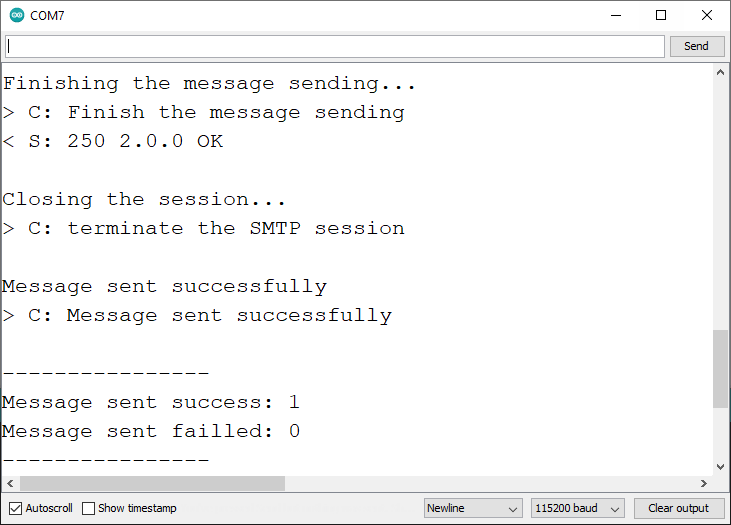
检查您的电子邮件帐户。您应该已经收到来自ESP8266板的电子邮件。

使用ESP8266通过电子邮件发送附件 (Arduino IDE)
本节将向您展示如何在ESP8266发送的电子邮件中发送附件。我们将向您展示如何发送 .txt 文件或图片。这对于发送包含过去几个小时或其他应用程序的传感器读数的 .txt 文件非常有用。
您应该将要发送的文件保存在 ESP8266 文件系统(SPIFFS 或 LittleFS)中。该库使用的默认文件系统是 LittleFS。您还可以发送保存在 microSD 卡上的附件,但我们不会在本教程中介绍此主题。
上传文件到 LittleFS
要通过电子邮件发送文件,您应该将它们保存在 ESP8266 文件系统中。该库默认使用 LittleFS。要使用 Arduino IDE 将文件上传到 LittleFS,您需要安装文件系统上传插件。阅读以下教程,了解如何安装文件并将其上传到 ESP8266 文件系统:
创建一个新的Arduino程序并保存它。转到“程序”>“显示程序”文件夹。在 Arduino sketch 文件夹中,创建一个名为 data 的文件夹。将 .png 文件和 .txt 文件移动到数据文件夹。
或者,您可以单击此处下载项目文件夹。
注意:使用默认代码时,您的文件必须命名为 image.png 和 text_file.txt,或者您可以修改代码以导入具有不同名称的文件。
我们将发送以下文件:
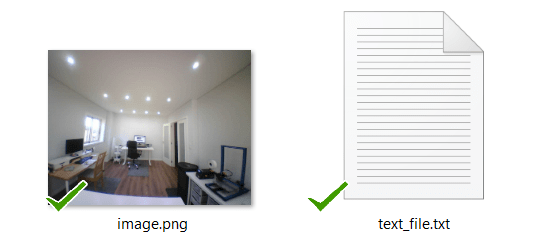
您的文件夹结构应如下所示(下载项目文件夹):

将文件移动到数据文件夹后,在 Arduino IDE 中,转到 LittleFS 数据上传> ESP8266工具,然后等待文件上传。
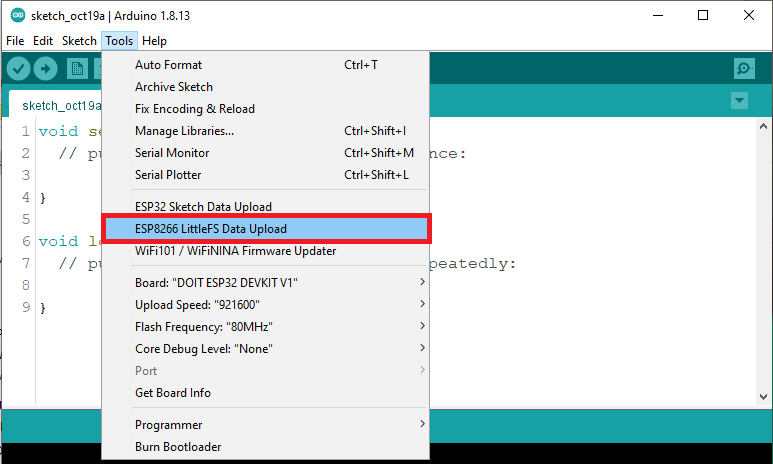
您应该会在调试窗口中收到一条成功消息。如果文件已成功上传,请转到下一部分。

使用方法
以下代码发送一封电子邮件,其中包含 .txt 文件和附加的图片。在上传验证码之前,请确保插入发件人电子邮件设置以及收件人电子邮件。
/*
更多Arduino/ESP8266/ESP32等教程请访问:https://www.qutaojiao.com
*/
// To use send Email for Gmail to port 465 (SSL), less secure app option should be enabled. https://myaccount.google.com/lesssecureapps?pli=1
#include <Arduino.h>
#if defined(ESP32)
#include <WiFi.h>
#elif defined(ESP8266)
#include <ESP8266WiFi.h>
#endif
#include <ESP_Mail_Client.h>
#define WIFI_SSID "REPLACE_WITH_YOUR_SSID"
#define WIFI_PASSWORD "REPLACE_WITH_YOUR_PASSWORD"
#define SMTP_HOST "smtp.163.com"
/** The smtp port e.g.
* 25 or esp_mail_smtp_port_25
* 465 or esp_mail_smtp_port_465
* 587 or esp_mail_smtp_port_587
*/
#define SMTP_PORT 25
/* The sign in credentials */
#define AUTHOR_EMAIL "YOUR_EMAIL@XXXX.com"
#define AUTHOR_PASSWORD "YOUR_EMAIL_APP_PASS"
/* Recipient's email*/
#define RECIPIENT_EMAIL "RECIPIENTE_EMAIL@XXXX.com"
/* The SMTP Session object used for Email sending */
SMTPSession smtp;
/* Callback function to get the Email sending status */
void smtpCallback(SMTP_Status status);
void setup(){
Serial.begin(115200);
Serial.println();
Serial.print("Connecting to AP");
WiFi.begin(WIFI_SSID, WIFI_PASSWORD);
while (WiFi.status() != WL_CONNECTED){
Serial.print(".");
delay(200);
}
Serial.println("");
Serial.println("WiFi connected.");
Serial.println("IP address: ");
Serial.println(WiFi.localIP());
Serial.println();
// Init filesystem
ESP_MAIL_DEFAULT_FLASH_FS.begin();
/** Enable the debug via Serial port
* none debug or 0
* basic debug or 1
*/
smtp.debug(1);
/* Set the callback function to get the sending results */
smtp.callback(smtpCallback);
/* Declare the Session_Config for user defined session credentials */
Session_Config config;
/* Set the session config */
config.server.host_name = SMTP_HOST;
config.server.port = SMTP_PORT;
config.login.email = AUTHOR_EMAIL;
config.login.password = AUTHOR_PASSWORD;
config.login.user_domain = "mydomain.net";
/*
Set the NTP config time
For times east of the Prime Meridian use 0-12
For times west of the Prime Meridian add 12 to the offset.
Ex. American/Denver GMT would be -6. 6 + 12 = 18
See https://en.wikipedia.org/wiki/Time_zone for a list of the GMT/UTC timezone offsets
*/
config.time.ntp_server = F("pool.ntp.org,time.nist.gov");
config.time.gmt_offset = 3;
config.time.day_light_offset = 0;
/* Declare the message class */
SMTP_Message message;
/* Enable the chunked data transfer with pipelining for large message if server supported */
message.enable.chunking = true;
/* Set the message headers */
message.sender.name = "ESP Mail";
message.sender.email = AUTHOR_EMAIL;
message.subject = F("Test sending Email with attachments and inline images from Flash");
message.addRecipient(F("Sara"), RECIPIENT_EMAIL);
/** Two alternative content versions are sending in this example e.g. plain text and html */
String htmlMsg = "This message contains attachments: image and text file.";
message.html.content = htmlMsg.c_str();
message.html.charSet = "utf-8";
message.html.transfer_encoding = Content_Transfer_Encoding::enc_qp;
message.priority = esp_mail_smtp_priority::esp_mail_smtp_priority_normal;
message.response.notify = esp_mail_smtp_notify_success | esp_mail_smtp_notify_failure | esp_mail_smtp_notify_delay;
/* The attachment data item */
SMTP_Attachment att;
/** Set the attachment info e.g.
* file name, MIME type, file path, file storage type,
* transfer encoding and content encoding
*/
att.descr.filename = "image.png";
att.descr.mime = "image/png"; //binary data
att.file.path = "/image.png";
att.file.storage_type = esp_mail_file_storage_type_flash;
att.descr.transfer_encoding = Content_Transfer_Encoding::enc_base64;
/* Add attachment to the message */
message.addAttachment(att);
message.resetAttachItem(att);
att.descr.filename = "text_file.txt";
att.descr.mime = "text/plain";
att.file.path = "/text_file.txt";
att.file.storage_type = esp_mail_file_storage_type_flash;
att.descr.transfer_encoding = Content_Transfer_Encoding::enc_base64;
/* Add attachment to the message */
message.addAttachment(att);
/* Connect to server with the session config */
if (!smtp.connect(&config)){
ESP_MAIL_PRINTF("Connection error, Status Code: %d, Error Code: %d, Reason: %s", smtp.statusCode(), smtp.errorCode(), smtp.errorReason().c_str());
return;
}
if (!smtp.isLoggedIn()){
Serial.println("nNot yet logged in.");
}
else{
if (smtp.isAuthenticated())
Serial.println("nSuccessfully logged in.");
else
Serial.println("nConnected with no Auth.");
}
/* Start sending the Email and close the session */
if (!MailClient.sendMail(&smtp, &message, true))
Serial.println("Error sending Email, " + smtp.errorReason());
}
void loop(){
}
/* Callback function to get the Email sending status */
void smtpCallback(SMTP_Status status){
/* Print the current status */
Serial.println(status.info());
/* Print the sending result */
if (status.success()){
Serial.println("----------------");
ESP_MAIL_PRINTF("Message sent success: %dn", status.completedCount());
ESP_MAIL_PRINTF("Message sent failled: %dn", status.failedCount());
Serial.println("----------------n");
struct tm dt;
for (size_t i = 0; i < smtp.sendingResult.size(); i++){
/* Get the result item */
SMTP_Result result = smtp.sendingResult.getItem(i);
time_t ts = (time_t)result.timestamp;
localtime_r(&ts, &dt);
ESP_MAIL_PRINTF("Message No: %dn", i + 1);
ESP_MAIL_PRINTF("Status: %sn", result.completed ? "success" : "failed");
ESP_MAIL_PRINTF("Date/Time: %d/%d/%d %d:%d:%dn", dt.tm_year + 1900, dt.tm_mon + 1, dt.tm_mday, dt.tm_hour, dt.tm_min, dt.tm_sec);
ESP_MAIL_PRINTF("Recipient: %sn", result.recipients.c_str());
ESP_MAIL_PRINTF("Subject: %sn", result.subject.c_str());
}
Serial.println("----------------n");
// You need to clear sending result as the memory usage will grow up.
smtp.sendingResult.clear();
}
}
代码的工作原理
这段代码与上一段代码非常相似,因此我们只看一下发送附件的相关部分。
在 setup() 中,使用 ESP 邮件客户端库方法初始化文件系统。ESP32 库中设置的默认文件系统是 LittleFS(您可以在库文件 ESP_Mail_FS.h 中更改默认值)。
// Init filesystem
ESP_MAIL_DEFAULT_FLASH_FS.begin();您需要按如下方式创建附件:
/* The attachment data item */
SMTP_Attachment att;然后,添加附件详细信息:文件名、MIME 类型、文件路径、文件存储类型和传输编码。在以下几行中,我们将发送图像文件。
att.descr.filename = "image.png";
att.descr.mime = "image/png";
att.file.path = "/image.png";
att.file.storage_type = esp_mail_file_storage_type_flash;
att.descr.transfer_encoding = Content_Transfer_Encoding::enc_base64;最后,将附件添加到邮件中:
message.addAttachment(att);如果要发送更多附件,则需要在添加上一个附件后调用以下行:
message.resetAttachItem(att);然后,输入其他附件(文本文件)的详细信息:
att.descr.filename = "text_file.txt";
att.descr.mime = "text/plain";
att.file.path = "/text_file.txt";
att.file.storage_type = esp_mail_file_storage_type_flash;
att.descr.transfer_encoding = Content_Transfer_Encoding::enc_base64;并将此附件添加到邮件中:
message.addAttachment(att);如果要发送更多附件,则需要在添加下一个附件之前调用以下行:
message.resetAttachItem(att);然后,输入其他附件(文本文件)的详细信息:
att.descr.filename = "text_file.txt";
att.descr.mime = "text/plain";
att.file.path = "/text_file.txt";
att.file.storage_type = esp_mail_file_storage_type_flash;
att.descr.transfer_encoding = Content_Transfer_Encoding::enc_base64;并将此附件添加到邮件中:
message.addAttachment(att);最后,您只需要像在前面的示例中一样发送消息:
if (!MailClient.sendMail(&smtp, &message, true))
Serial.println("Error sending Email, " + smtp.errorReason());示范
上传代码后,以 115200 的波特率打开串行监视器。如果一切按预期进行,您应该会在串行监视器上收到类似的消息。

如果您转到收件箱,您应该会收到包含两个附件的邮件。
总结
在本教程中,您学习了如何使用 SMTP 服务器通过 ESP8266 NodeMCU 板发送电子邮件。您已经学习了如何发送 HTM 文本、原始文本和附件。
现在,我们的想法是修改代码并将其包含在您自己的项目中。例如,发送包含过去一小时的传感器读数、检测到运动时的通知等的 .txt 文件可能很有用。

